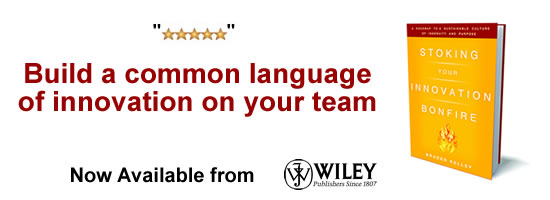A Sniff Test for Strategy

When it comes to developing strategy using the Play-to-Win framework, the most difficult question to answer is “How will we win?†From what I’ve observed and experienced in facilitating countless strategy sessions, I believe the reason it’s so difficult is that there is a tendency to discuss and answer the question in the abstract, which results in generic responses that run counter to the what the question is really asking, which is this: what is our unique and defensible advantage over competitive alternatives?
(NOTE: There is ALWAYS a competitive alternative.)
The first clue that your competitive advantages aren’t actual advantages is that everyone else on Earth claims those advantages too. Meaning, they’re generic, and thus non-differentiating.
Abstract and generic answers sound like this: “Better customer experience.†“Service excellence.†“Operational excellence.†These kinds of answers are problematic, strategically speaking, because while they sound good, they mislead people into believing they have an advantage when they really don’t, and believing they’re making a strong choice when they aren’t really making a choice at all.
Here’s a simple “sniff†test to see whether you have unique and defensible advantage (and have thus made a strong choice): Would a competitor be able to make a logical argument for a winning by taking the opposite approach you are?
If the answer is “no,†then (a) you are not making a true choice, and (b) you do not have a true winning edge.
In other words: if the opposite sounds silly or even stupid, you do not have a true How to Win! Which unfortunately means your chances of actually winning are slim.
For example, Southwest Airlines doesn’t consider “best pilots†as a unique advantage for two reasons. First, their pilots don’t need to be any better at flying planes than any other airline. Second, no airline in the world would list “worse pilots†as a defensible advantage.
Likewise, can you imagine any company (with the possible exception of Jerry Seinfeld’s “Soup Naziâ€) claiming “worse customer experience†or “service failure†or “operational ineffectiveness†as their choice for how to win?
There are many examples of competitors in a given space winning with diametrically opposed strategic advantages: Uber, Air BnB, Cirque du Soleil, Netflix all chose to win by delivering value in ways that were the polar opposite of the existing, traditional leaders. As did Southwest Airlines by offering (initially) one-class, lowest-priced, casual/fun service. Four Seasons enjoys a 33% revenue-per-room-night premium over second place Ritz Carlton by offering a kind of experience reminiscent of your home or office, versus a more obsequious, ornate, white-glove experience. Fidelity and Vanguard have nearly opposite offers for wealth management: one is non-managed, the other is fully-managed.
Failing the strategy sniff test tells you immediately that you are simply one of many competing alternatives, with no clearly superior value equation. And if we know anything about winning, we know that the only way to sustain a winning position in any space is to consistently offering a better value equation for a given playing space.
A truly unique and defensible advantage is one that can’t be copied and can’t be bought. OR, it’s extremely difficult and costly to do either or both.
Take a look at what you’ve listed as competitive advantages…your answers to the “How Will We Win†question. Do they pass the strategy sniff test?
If the answer’s no, go back to the drawing board. (Or, better yet, the Play-to-Win strategy canvas).
Rethink anything that sounds like: customer focus, customer service, service excellence, feature x/more features, better data/SEO/social media, contracts/patents, intellectual property, and lower price, and first mover advantage.
It’s not that any of these aren’t advantages, it’s just that they aren’t defensible. Features are only an advantage until someone copies them. So-called better data/SEO etc is fleeting at best, and the quality of competitive alternatives is outside your control. Contracts and patents are legally defensible, but rarely stave off competitors – the exception is pharmaceuticals, and even then it’s not indefinite. Intellectual property was once defensible, but in an open world of advanced technology, it isn’t. Lowering your prices lasts only until the competitor lowers theirs. Being first to market is no longer sustainable; in fact, fast followers often beat the first movers.
So what kinds of advantages are unique and defensible, even unfair?
Things like exclusive partnerships, deep subject matter expertise or knowledge, special authority, obsession with a signature experience or element, having a “dream team,†a loyal customer base, and even celebrity endorsements.
All of these are very difficult or very costly to acquire. If your competitors would kill to have any of these, you have a defensible advantage.
Do not despair if you do not now have a unique, defensible advantage, because it represents a strategic opportunity: you now have the opportunity to begin innovating!
In the meantime, it is okay to list the best advantage you do have, as long as you indicate how long you might hold onto that edge. You might even give thought to a contingency response, or perhaps another advantage toward which you can pivot when your advantage is no longer defensible.
Wait! Before you go…
Choose how you want the latest innovation content delivered to you:
- Daily — RSS Feed — Email — Twitter — Facebook — Linkedin Today
- Weekly — Email Newsletter — Free Magazine — Linkedin Group
 Matthew E. May is the author, most recently, of Winning the Brain Game: Fixing the 7 Fatal Flaws of Thinking.
Matthew E. May is the author, most recently, of Winning the Brain Game: Fixing the 7 Fatal Flaws of Thinking.
NEVER MISS ANOTHER NEWSLETTER!
LATEST BLOGS
Three things you didn’t know about credit cards
Photo by Ales Nesetril on Unsplash Many of us use credit cards regularly. From using them for everyday purchases to…
Read MoreFive CV skills of a business-minded individual
Photo by Scott Graham on Unsplash The skills listed on a CV help employers quickly understand your suitability for a…
Read More


